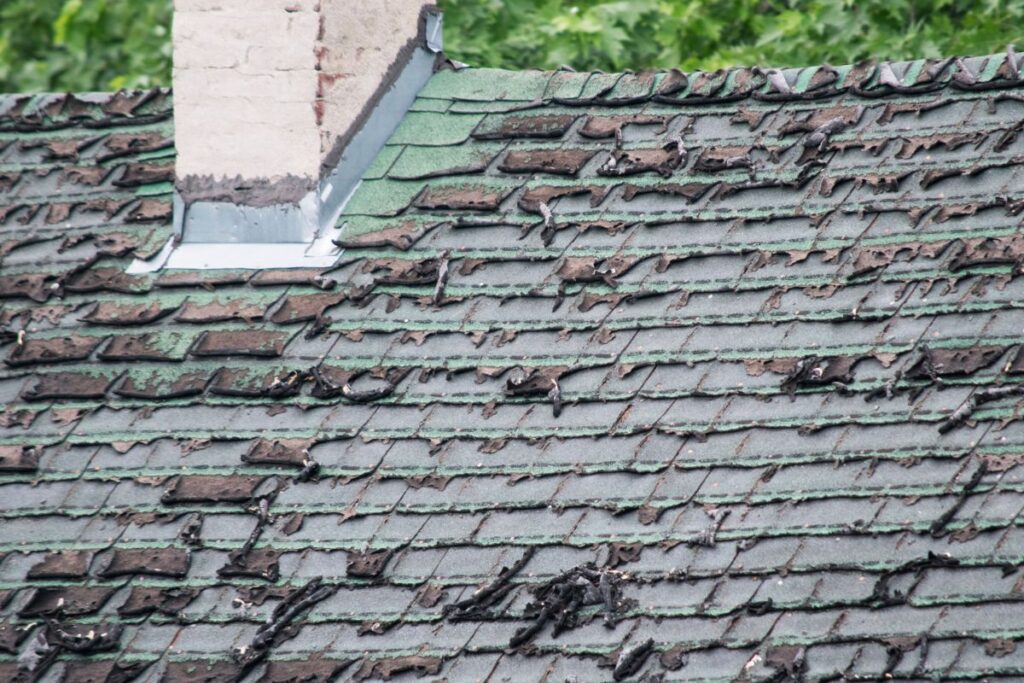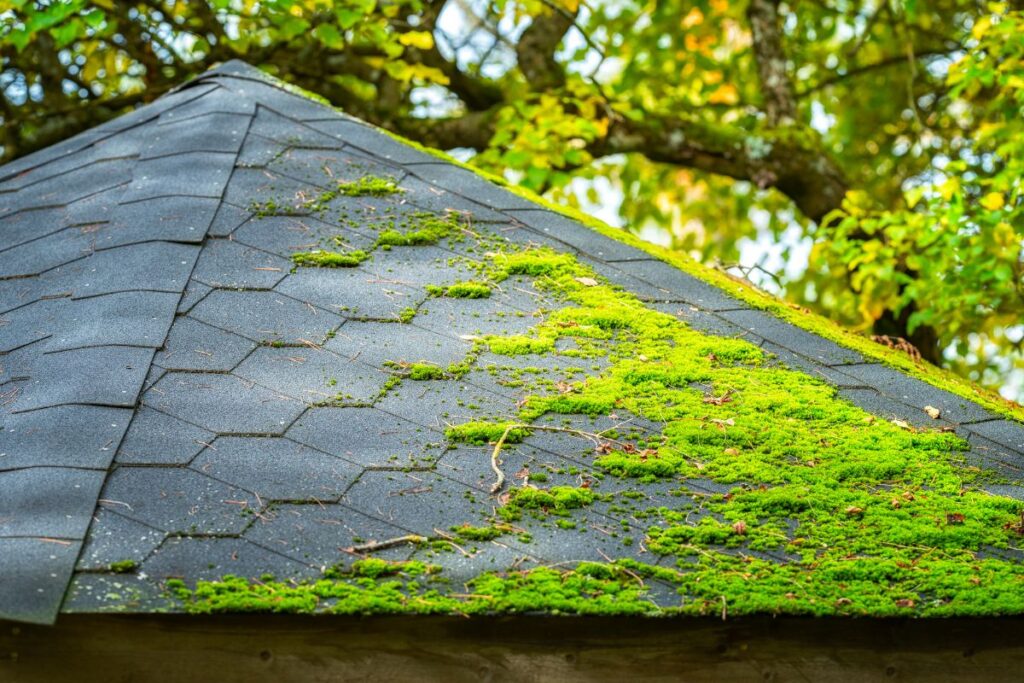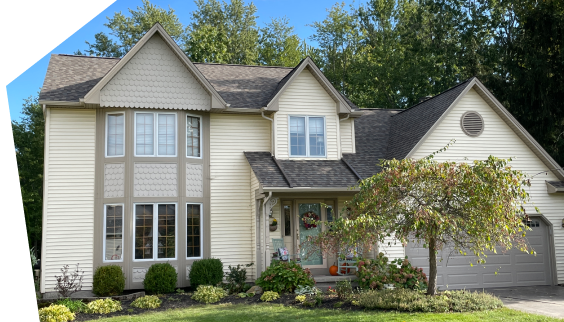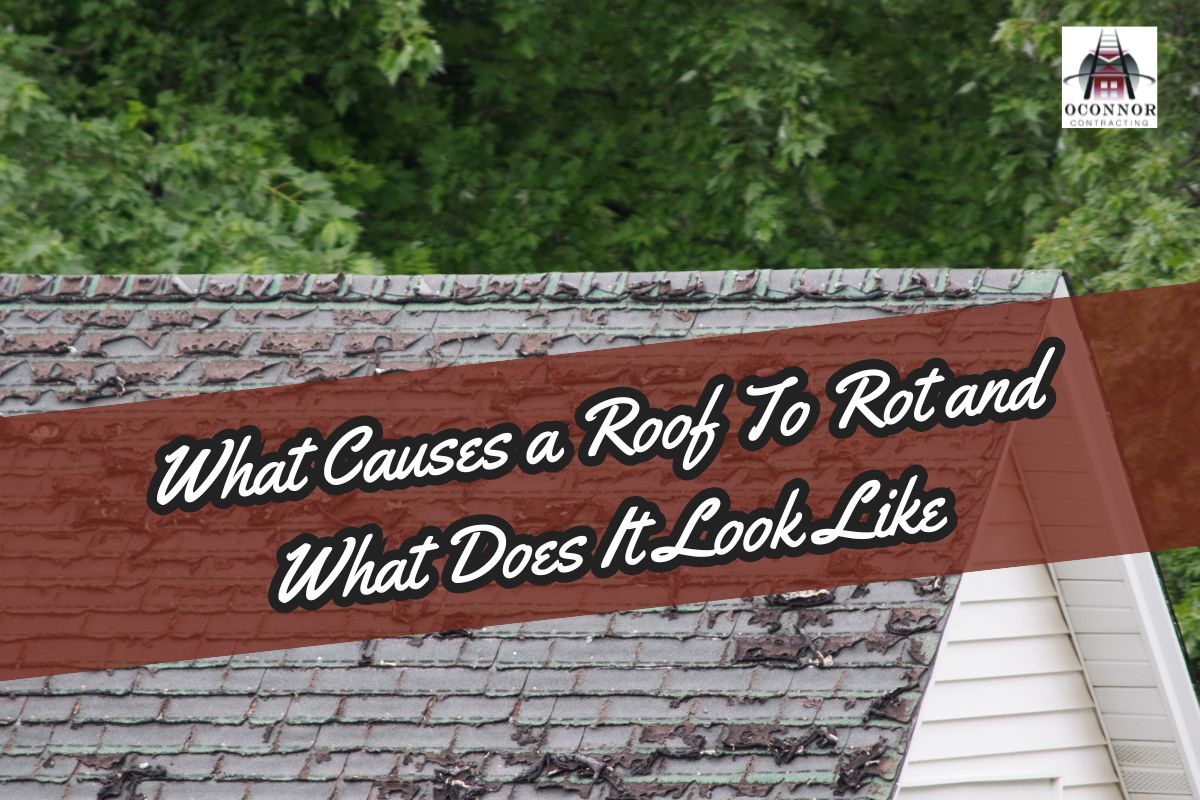More than just a covering, your roof is an essential part of keeping you and your family safe from the weather. But with time, even the strongest and best-built roofs can sustain damage. Roof rot is one of the sneakiest enemies to the structural integrity of your roofing system.
We’ll explore what causes roof rot, how to spot it, and—most importantly—how to stop it from wreaking havoc on your home in this in-depth blog post.
What Is Roof Rot?

Roof rot is caused by moisture problems such as leaks, condensation, or inadequate ventilation, which encourage the growth of fungi, mold, and mildew that deteriorate the wooden parts of a roofing system. It compromises the roof’s structural integrity and increases the chance of a collapse if left unchecked. The progressive nature of roof rot makes the damage worse over time, starting a vicious cycle of deterioration that makes it more susceptible to leaks and additional issues.
Neglected roof rot poses serious safety risks and can result in significant home damage. Prompt detection and repair are essential to prevent extensive damage and expensive replacements.
What Are The Causes Of Roof Rot?
Now that you understand how serious roof rot can be for your home’s structure, let’s delve in to understand the causes of it:
1. Moisture Accumulation through Condensation:
Roof rot often begins with a buildup of condensation. Warm, humid indoor air meeting the cooler area beneath the roof forms condensation, which can gradually weaken the wood.
2. Humidity and Temperature Fluctuations:
Temperature and humidity fluctuations within the attic significantly contribute to roof rot. Warmer periods increase humidity, creating an ideal environment for wood-degrading fungi. Consistent levels, maintained through proper insulation and ventilation, are crucial for prevention.
3. Dysfunctional Roof Vents:
Efficient roof ventilation is critical for maintaining a dry attic atmosphere. Malfunctioning or inadequate systems lead to moisture buildup, fostering conditions conducive to roof rot.
4. Water Leaks:
Water leaks within the roofing system pose a significant risk for roof rot. Prompt detection and repair are paramount for preserving roof integrity.
5. Presence of Wood-Damaging Fungi:
Wood-damaging fungi expedite roof structural degradation. Regular inspections, timely repairs, and proper ventilation maintenance are indispensable for averting their growth and spread.
6. Ice Dams:
Ice dams can trap water along the roof’s edge, leading to seepage under roofing materials, and causing widespread damage to decking, attic, insulation, and ceilings.
7. Neglected Maintenance:
Ignoring regular inspections and maintenance escalates minor issues, and may result in significant moisture problems and eventual roof rot.
8. Improper Installation:
Substandard installations can create vulnerabilities, such as gaps, improper seals, and uneven shingle placement. These issues can allow water infiltration and subsequent roof rot, highlighting the necessity of proper installation techniques for long-term integrity.
9. Storm Damage:
Severe weather conditions cause roof damage, resulting in leaks and structural weaknesses that provide entry points for moisture, necessitating prompt post-storm inspection and repairs to mitigate roof rot.
10. Pests:
Pest infestations indicate roof breaches that may lead to moisture-related issues and roof rot, underscoring the importance of regular inspections to prevent pest-related damage.
11. Cracked Flashing:
Damaged flashing allows water infiltration, leading to rot. Flashing seals roof joints and edges but becomes ineffective when cracked or damaged. Regular inspection and maintenance of flashing can prevent water entry and rot development.
12. Deteriorated Shingles:
Cracked, curled, or missing shingles allow water penetration, leading to rot over time. Shingles protect the roof but become ineffective when damaged, compromising the underlying structure. Regularly inspecting and replacing damaged shingles is essential for preventing rot.
13. Clogged Gutters:
Clogged gutters can cause water backup, contributing to rot. Debris blockage prevents proper water drainage, leading to pooling around the roof edges and eventual structural damage.
Signs of Roof Rot
For a homeowner, recognizing common signs of roof rot is essential. Some of the most common signs are:
1. Water Stains on Ceiling and Walls:

Water stains around the ceilings or walls, especially in the attic or upper levels, suggest a roof leak and potential rot. These stains result from water seeping through roof openings, indicating compromised waterproofing. Promptly addressing leaks prevents rot and further damage.
2. Dark Spots on Wood:

Discolored wood in attics indicates rot or fungal growth due to excessive moisture exposure. Mold and fungi weaken the wood, making it susceptible to further damage. Early identification and treatment of dark spots prevent the spread of rot and maintain structural integrity.
3. Sagging Roof:
A sagging or uneven roof is a prominent sign of roof rot. This occurs when wood framing or trusses deteriorate, potentially leading to serious safety hazards. When moisture damage weakens structural components, the roof dips or becomes uneven.
4. Musty or Damp Smell in the Attic:
A musty odor in the attic indicates moisture buildup and potential rot. Due to damp, humid conditions, this smell often accompanies mold or mildew growth. The moisture source must be addressed to stop the rot and further damage to the house.
5. Discolored Fascia:
Discoloration or deterioration of fascia boards along the roof edge can signify rot. Fascia boards support the gutters and protect the roof edge, but moisture penetration can cause damage.
6. Mold and Moss Growth:

Mold, mildew, or moss on the roof or in the attic signal excessive moisture and potential rot. These growths thrive in damp, humid environments caused by roof leaks or poor ventilation. They contribute to material deterioration and require immediate attention to prevent further damage.
Repair vs. Replacement: What To Do When Your Roof Is Rotting?
Several factors come into play when deciding between roof repair or replacement for a rotting roof:
Roof Repair:
If the roof is relatively new, under 15 years old, and the rot is confined to a small area, repair might suffice. Replacing only the damaged portion of the roof deck and shingles is often a cost-effective solution compared to a full replacement.
Roof Replacement:
For older roofs over 15 years old with widespread rot, a full replacement is typically the better long-term solution. Extensive rot suggests the entire roof deck might need replacement, as patching may only offer temporary relief. Other significant damage, like water damage or missing shingles, also points towards replacement.
How to Prevent Roof Rot
Before anything, it is essential that, as a homeowner, you do your best to prevent roof rot in your home. Some common ways are:
- Maintain Proper Ventilation: Ensure sufficient attic ventilation to prevent moisture buildup. Install both intake and exhaust vents to help with air circulation and reduce humidity levels.
- Regular Roof Inspections: Schedule inspections twice a year to detect issues early. Professional inspections can identify and address minor problems before they worsen.
- Clean Gutters and Downspouts: Clean gutters regularly and clear debris that could clog gutters and lead to roof rot.
- Ensure Consistent Attic Temperature: Maintain consistent attic temperatures year-round to prevent moisture buildup. Consider installing a fan or cooling system for temperature regulation.
- Prompt Repairs: Address roof issues promptly, no matter how minor, to prevent further damage. Quick repairs can stop problems like rot from spreading and causing structural issues.
- Upgrade Insulation: Improve or replace attic insulation to guard against humidity. Quality insulation helps repel outside heat and moisture, protecting against roof rot.
- Invest in a Dehumidifier: Use a reliable dehumidifier in summer to lower indoor humidity levels. Reduced humidity helps prevent moisture-related problems such as roof rot.
- Quality Roofing Materials: Choose high-quality roofing materials like asphalt shingles or metal panels. Better materials decrease the risk of water infiltration and damage to the roof structure.
Conclusion
Roof rot is a serious threat to the integrity of your home’s roof and its overall structural stability. By understanding the main causes and signs of roof rot and taking proactive steps to prevent it, you can protect your home from expensive damage and ensure the safety and well-being of your family for years to come.
For quality roof replacement services, choose OConnor Contracting. With years of experience and a focus on quality, we offer efficient and professional solutions tailored to your needs. Trust us for our attention to detail and lasting results using premium materials. Let OConnor Contracting take care of your roofing needs with expertise and reliability. Give us a call at (716) 600-7663.


